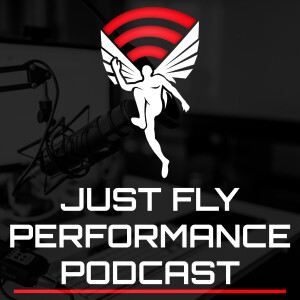
180: Helen Hall on Optimizing Posture, Glutes and Joint Mechanics in Running and Beyond | Sponsored by SimpliFaster
 2019-12-12
2019-12-12
Download
Right click and do "save link as"
Today’s episode features running coach, biomechanist, and endurance athlete, Helen Hall. Helen is the author of “Even With Your Shoes On”, a comprehensive manual on teaching running in a natural manner based on the sensory capabilities of the human body. She is a minimalist ultra-distance runner, 6 times Ironman and credited with being the world’s first ‘barefoot’ Iron(wo)man. Helen is the owner of the Perpetual Forward Motion School of Efficient Running, as well as a running injury clinic. Helen uses the latest movement science and gait analysis technology to help people find solutions for their pain and injuries.
Helen is a level 4 Anatomy in Motion practitioner (former podcast guest Gary Ward’s system). Helen’s framework of building running technique based on sensory feedback, joint motion, and self-organization is unique and a breath of fresh air, given the lack of importance many coaching systems place on body awareness and natural learning. Even if you aren’t interested in running, the principles from Helen’s system carry over to sprinting, jumping and any other human movement that involves the gait cycle.
In the last five to ten years, many of my own ideas on what constitutes effective technical coaching have been reformulated, based on the sensory and self-organization capabilities of the human body. Helen’s book has been a capstone of sorts on this period of learning in my own life, so I was excited to get her on the show to talk about her approach to coaching.
On the show, we talk about how and why running shouldn’t be an injury-inducing form of exercise, as well as many points on Helen’s philosophy of improving running and human movement. Some specifics include the importance of awareness, why moving joints is superior to manual “muscle activation”, using lunge variations to determine glute contribution to running, as well as building running technique from a sagittal to frontal to transverse plane sequence, specifically addressing the role of posture and fixing “crossover” running.
Today’s episode is brought to you by SimpliFaster, supplier of high-end athletic development tools, such as the Freelap timing system, kBox, Sprint 1080, and more.
Key Points
The question of jogging and running as a natural form of exercise, and if we as humans are actually “born to run”
How a person can find their own best running technique through a process of noticing one’s own body
Answering the question if there is ever room for internal cues in a coaching system
Why activating and moving joints is superior to concentrically activating muscles for performance
Using lunge variations to see if a runner could activate their glutes while moving
How to build running technique through awareness and joint mobiliziation drills from a sagittal, frontal and then transverse plane sequence
How to optimize running posture using wall-based spinal alignments
How to fix crossover gait using frontal plane drill work
Quotes
“I passionately believe we are (born to run) because toddlers are at it before they really even can walk well”
“Running is just another speed, another gear. A whole array of different speeds is what we do well. Going further and going long is what we do best of all. Enduring is in our evolutionary history”
“People are disconnected from the way that they are doing anything… nobody notices anything.”
“When a person runs and gets injured, is it how their body wants to run, or is it what they’ve been taught or think they should be doing. If it’s not what their body wants to do, but it’s being inflicted on the body by an opinion, then it’s quite possible that the body might not like it”
“It’s not about telling people “how to”…. There’s a lot of confusion because so many of these “guidelines” contradict each other”
“Let’s start by exploring, how do you walk, and when you go from your walk into your run, what changes?”
view more
More Episodes
012345678910111213141516171819
Create your
podcast in
minutes
- Full-featured podcast site
- Unlimited storage and bandwidth
- Comprehensive podcast stats
- Distribute to Apple Podcasts, Spotify, and more
- Make money with your podcast
It is Free
- Privacy Policy
- Cookie Policy
- Terms of Use
- Consent Preferences
- Copyright © 2015-2024 Podbean.com





